Can We Save the Great Salt Lake?
On a waterfowling trip to Utah’s famous inland sea, the author gets a firsthand look at the crisis facing one of the most important wetland ecosystems in the arid West
On a waterfowling trip to Utah’s famous inland sea, the author gets a firsthand look at the crisis facing one of the most important wetland ecosystems in the arid West
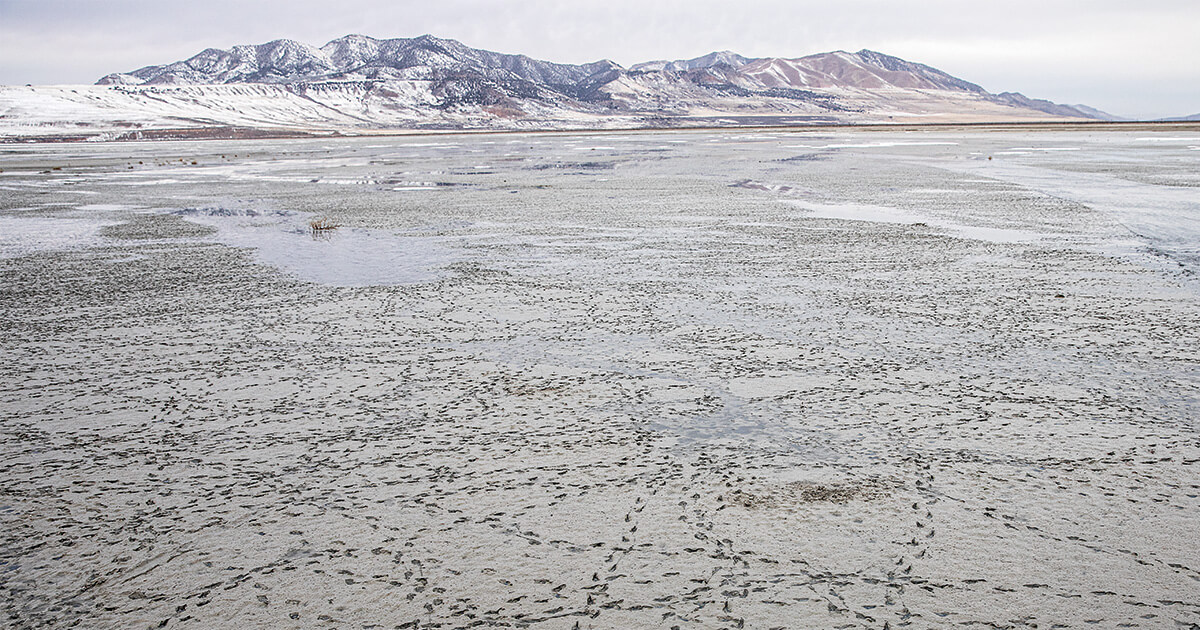
With the soaring Wasatch Front clad in brown rock streaked with snow, I squint to focus on an approaching flock of pintails in the dim light. At times I lose them against the backdrop entirely, then pick up a quiver of wingbeat, or a bird’s silhouette, as it crosses in front of a snowy patch.
So far this morning we’ve had pintails looking at us as they skimmed cattails locked down in ice, and pintails hovering just out of range, and pintails skirting the decoys. These are the first to buy the whole enchilada. As I pull up on the closest one and the shotgun bead blocks out the bird, I pull the trigger in the same instant that the thought “hen” enters my mind.
The pintail tumbles as I bite my lip.
“You know what’s going to happen next,” Jack Ray says, grinning. He is my host here at the Rudy Duck Club, which has been open on the south shore of the Great Salt Lake since 1909. The pintail limit is one bird, and I just punched my tag with a hen. Any duck hunter worth his salt knows what is going to happen next.
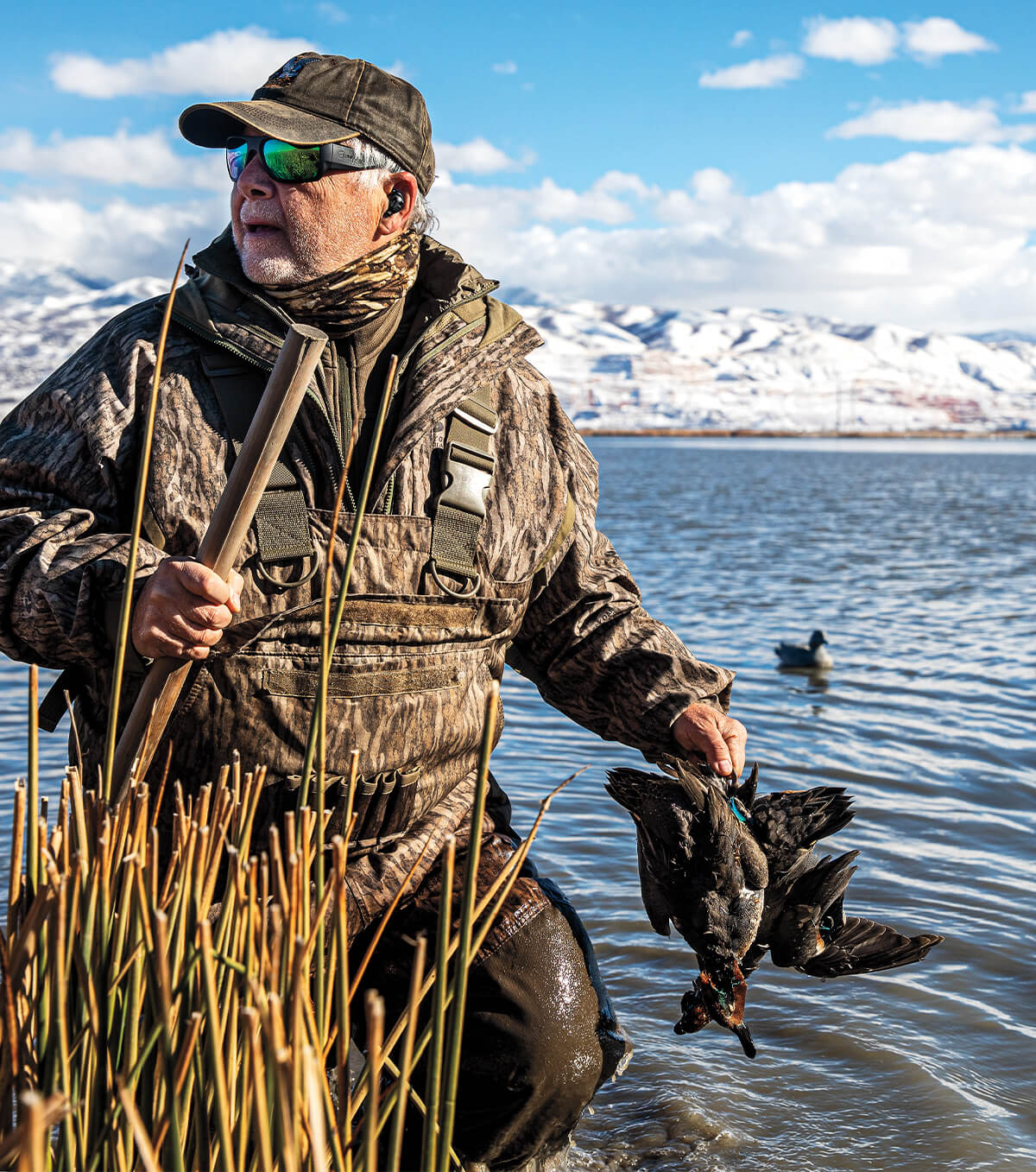
On cue, the sky suddenly fills with pintails. There are jaunty drakes aplenty, the rising sun glinting off their telltale chocolate heads and white neck stripes. Pintails alone, pintails in pairs, pintails in flocks of a half-dozen or more. For the next hour, pintails zip and zing over the decoys and hover overhead. I could have had my pick of bull sprigs.
For anyone who has hunted this astonishing landscape, where some of the wildest waterfowl country left on the continent exists cheek by jowl with some of the nation’s fastest-growing metropolitan regions, the notion of skies suddenly filling with ducks comes with the territory. The Great Salt Lake and its associated wetlands are a massive anchor in the Pacific Flyway, and not just for ducks. Shorebirds can fill the lake’s exposed mud beds shoulder to shoulder. The lake hosts the largest staging population of Wilson’s phalaropes in the world—a half-million have been counted in a single day. A quarter-million American avocets visit the lake. And while it faces significant challenges—challenges Ducks Unlimited is committed to helping meet—this land of extremes can still be a place where duck hunting memories last for decades.
Whether the ducks show or not.
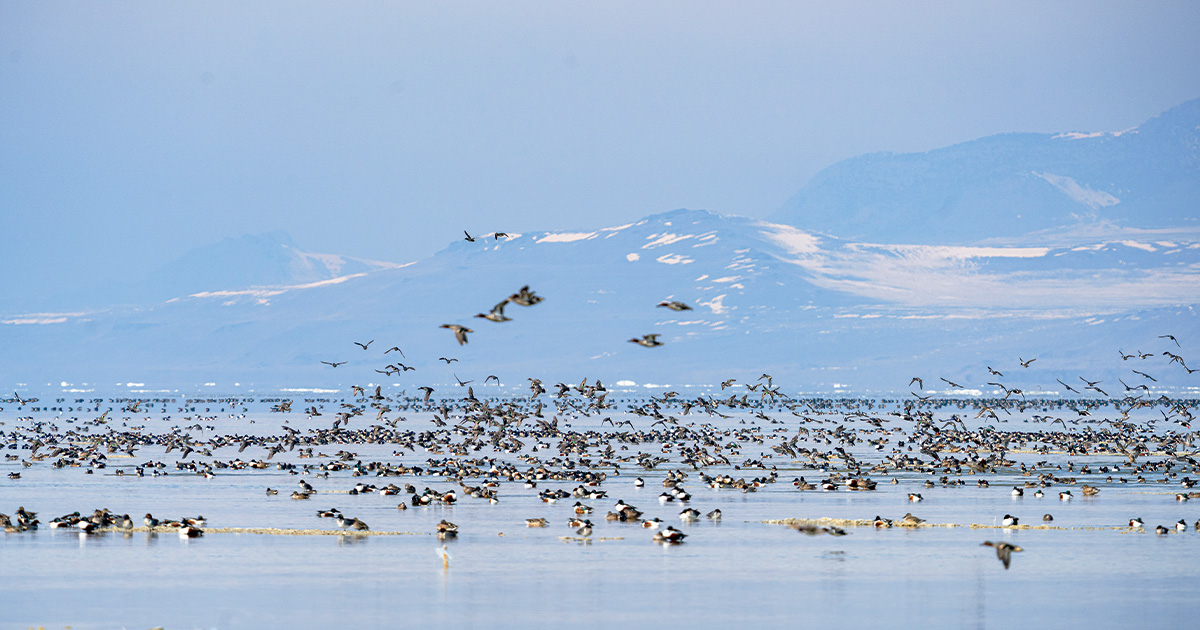
At the turn of the century, Ray tells me, on the nights before opening days of duck season, you could stand on the rooftops of buildings in downtown Salt Lake City and see campfires burning like a twinkling constellation of stars at duck camps all along the Great Salt Lake. A hundred years ago, a mosaic of wetlands—hot springs, playas, ponds, and sloughs—were strung out like a fertile crescent of freshwater marsh that embraced the eastern shore of this massive inland sea. In March of 1869 the Union Pacific Railroad reached Ogden, soon to connect with the Central Pacific to tie together the first transcontinental railroad. Fifteen years later, the first duck club in the region, the Salt Lake Sportsman’s Club, was founded. In 1898, the Bear River Duck Club would form, with aspirations to rival any club on the continent in creature comforts. It offered hot and cold water in every room, steam heat, and even telephone services. Soon, according to one reporter, sunrise would find hundreds of hunters lining the roads near the Great Salt Lake, ready to make their way into the marshes. Dozens of clubs operated on and near the lake. By 1904, crowed the Salt Lake Herald, “duck hunting could properly be called the national sport of Utah.”
From my perch in a marsh blind at the Rudy Duck Club, I turn my eyes toward the southeast, where the skyline of Salt Lake City, only 10 miles distant, seems to rise from the water. So close. And getting closer.
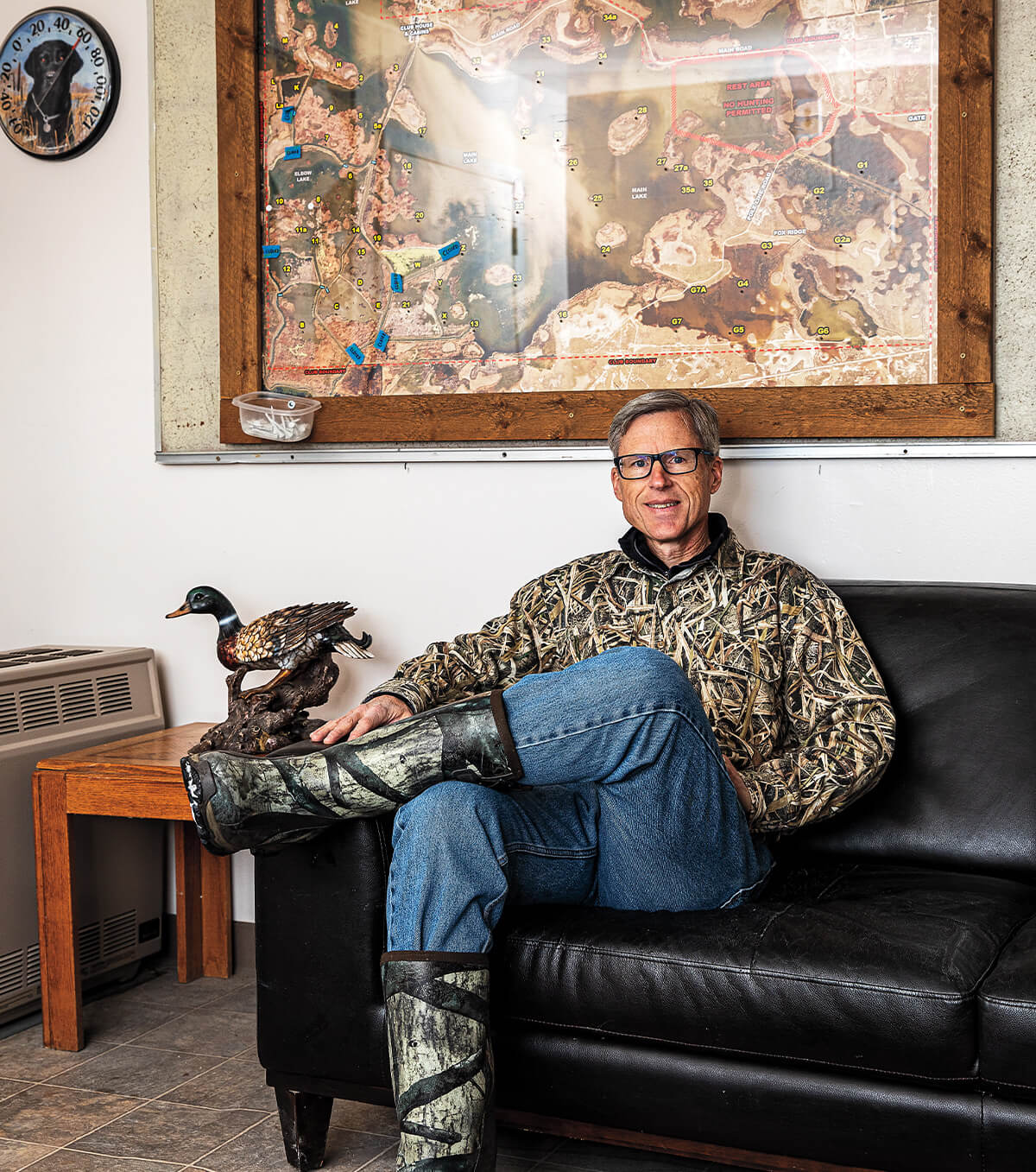
Ray is a student of history and politics, and he’s also a retired attorney with a strong track record of fighting to keep the region’s duck clubs healthy and whole. The Rudy Duck Club’s proximity to the encroaching urban edge is jolting. Just a little more than two miles to the south is Salt Lake City International Airport. The historic duck clubs of the region still manage and protect tens of thousands of acres of waterfowl habitat, Ray says. But a rich history of waterfowling will not on its own hold back the forces that value unbridled growth over ecological stability. “Orange County, California, once had 30 duck clubs,” Ray tells me. Not a single one remains, all buried under the asphalt of the Los Angeles megalopolis.
Compounding the challenge, of course, is the well-known plight of the shrinking Great Salt Lake. Diversions for agriculture, industry, and other uses siphon off 80 percent of the lake’s natural inflows of freshwater. With a state population expected to grow by about two-thirds by 2050 and an extreme drought cooking the region, this fall the lake reached the lowest level in 170 years. In the high-water years of the mid-1980s, Ray says, the main lodge at the Rudy Duck Club stood in knee-deep water. Now, the edge of the lake is six to eight miles away.
A lot of people are working hard to keep the stewardship strong.
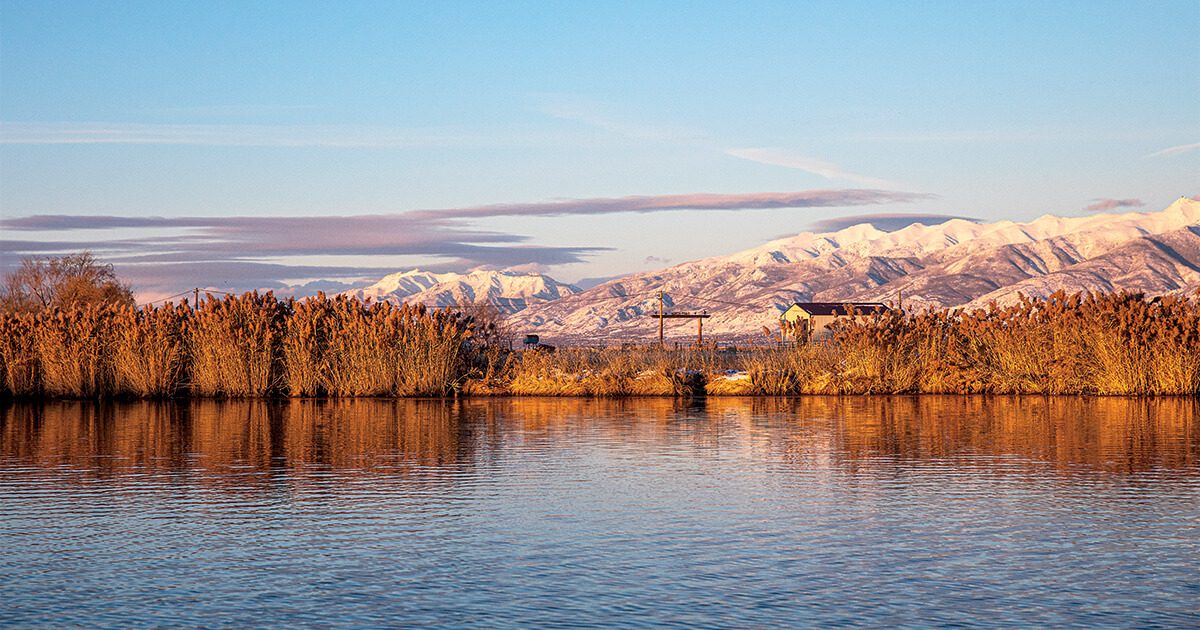
At midmorning the next day, I’m some 40 miles north of the Rudy Duck Club, in a pit blind at another historic property: the Chesapeake Duck Club. It’s been a solid three hours, and Carroll Dolson and I haven’t yet fired a shot. He is a big man, with a big voice and a big smile and a big personality to match. He reaches over to tap me on the shoulder. “Look at that,” he says, nodding toward a nearly 360-degree panorama of snowy mountain and marsh and cornfield. A half-mile away, ducks stream across the blue sky in long, thin lines. “I never get tired of it.”
I think he can hear my thoughts: Me neither, but I wouldn’t mind a shot or two. Now Dolson reaches over to pat me on the back. “They’re going to get hungry this afternoon, I know it,” he assures me. “It’s always the right place somewhere. We just need to make it the right time. Which means we’re in for the long haul, young man.”
I grin. I like it when someone calls me “young man.” And I like it even more when I realize I’m in a blind with a hunter who will stay after it no matter what.
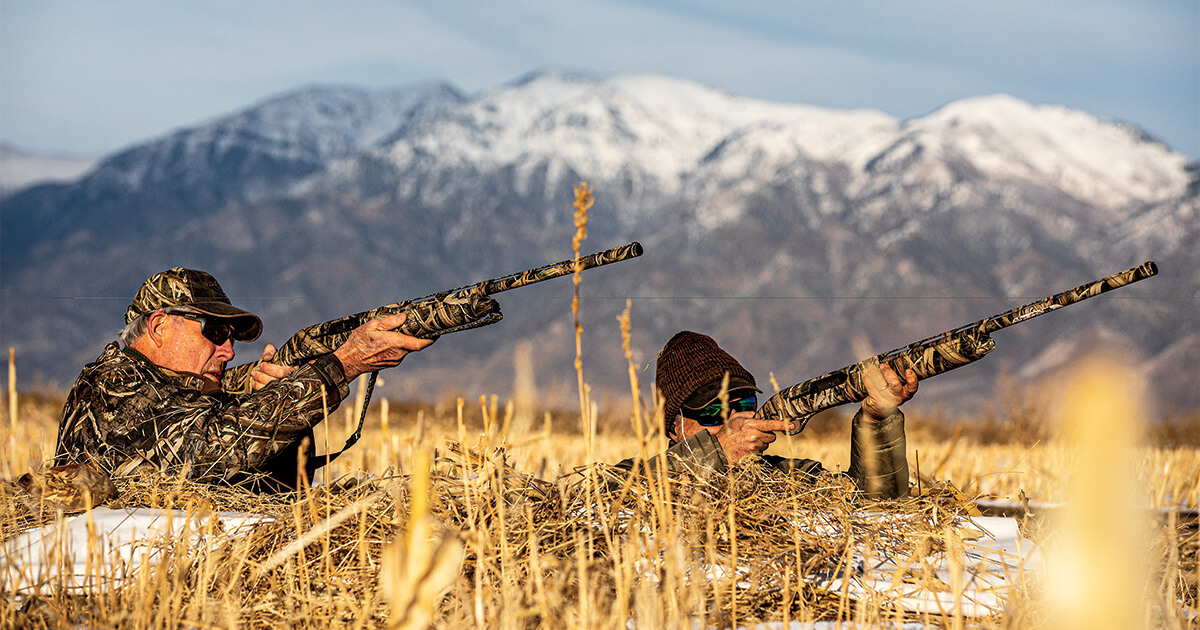
The Chesapeake Duck Club occupies some cherished territory, situated near the huge Bear River Bay on the east side of the lake. Bear River Bay was a market hunting hot spot, where gunners poled skiffs across mere inches of water and used shovels to turn over humps of mud called “daubs” to serve as decoys to incredible flights of ducks. Now home to the Bear River Migratory Bird Refuge, established in 1928, the 74,000-acre mosaic of marsh, open water, and mudflats is neighbor to some of the most storied of the Great Salt Lake hunting clubs, some with private rail cars and celebrated chefs. The Bear River Duck Club still operates here. Others such as the Duckville, Provo, and Cache Valley clubs also put down roots in this storied area.
Dolson’s club, the Chesapeake Duck Club, was founded in 1903. It served as a headquarters for market hunters at first, a common feature of the old Great Salt Lake clubs, sending untold thousands of iced-down birds by rail to major cities. Early on, a few particularly industrious members hatched a plan worthy of a Fifth Avenue marketing firm: Name the club “Chesapeake,” and it would borrow from the gilded reputations of the grand dames of East Coast waterfowling. In the far-flung West, what duck hunter wouldn’t want to be associated with the greatest waterfowling region on the planet?
Even today, the club is spoken about in hushed tones of comfort and tradition. Members have their own one- and two-bedroom apartments. The club’s records are archived by the Utah State Historical Society. “It’s a privilege to hunt here,” Dolson says. When he first bought into the club in 1991, his ducking kit included little more than a shotgun, a wading jacket, a pack, and decoys that he loaded into a yellow Cadillac Coupe de Ville. “To this day, in my 32nd year here,” he insists, “I don’t take it for granted.”
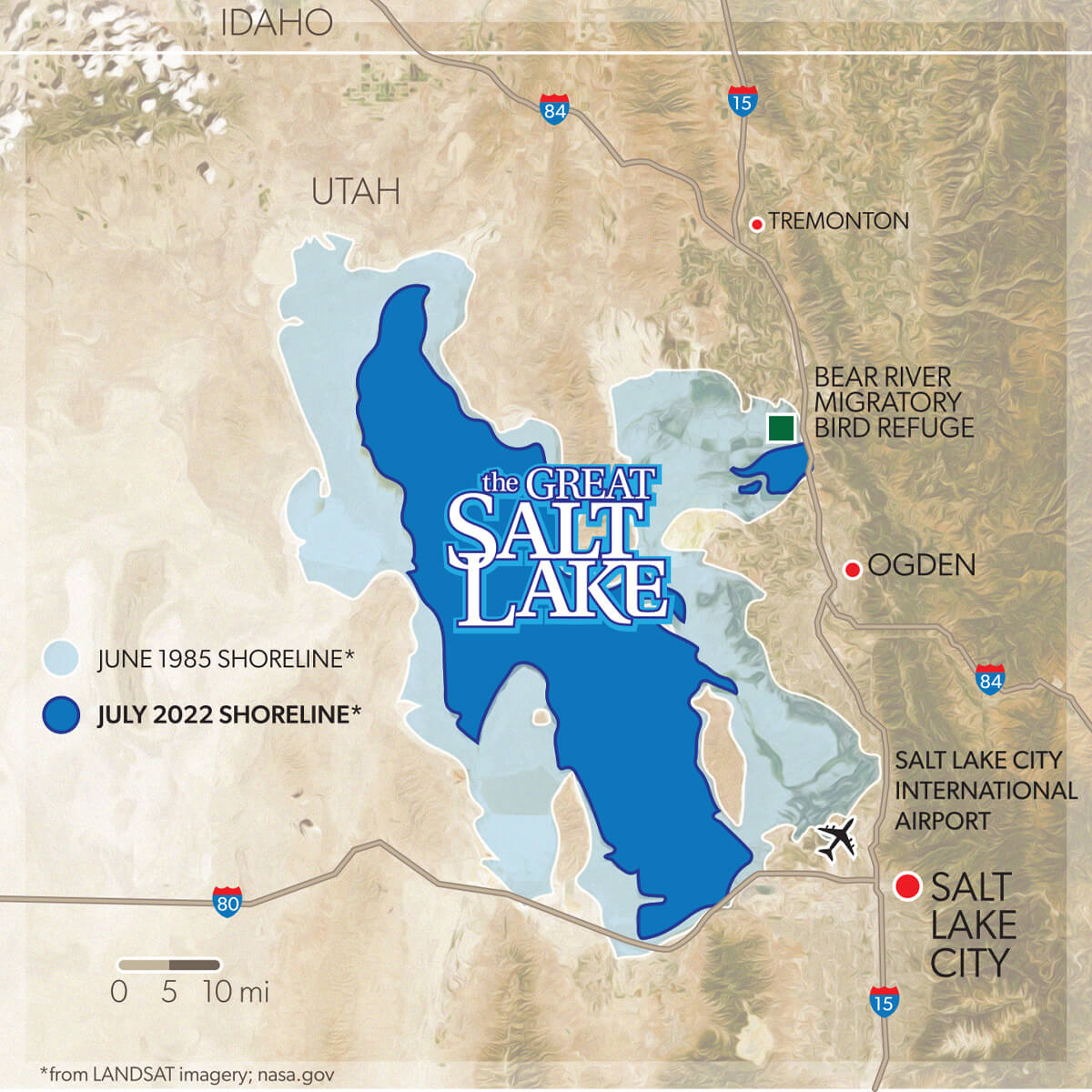
That’s clear, considering this: Dolson chairs the committee shepherding DU’s Great Salt Lake Initiative, a five-year,
$5 million effort kicked off in 2022 that aims to use natural infrastructure; water quality and quantity conservation measures; and public policy to shore up the lake’s water resources for people and wildlife. It’s a significant sum for a significant issue, and Dolson seems well positioned to bring it to fruition. The Chesapeake club itself has a storied history of conservation support. Of 41 members, more than 30 are DU Life Sponsors.
Despite the big numbers, Dolson insists that the initiative’s financial bottom line isn’t necessarily the bottom line for conservation. DU’s goal of raising $5 million for the Great Salt Lake Initiative is ambitious, but it will only be met if everyone puts their shoulders to the wheel. It’s really simple, Dolson says. “If you take, you have to give. It doesn’t matter how much you have. What matters is whether or not you’re willing to give.”
And our day isn’t duckless after all. In such a wide-open landscape, it’s funny that our first mallard boils up in front of the blind, flying low and obscured by a patch of tumbleweed, as if magically erupting from the ground. I have to draw and shoot practically like a gunslinger, barely getting a shot off but dropping the bird for Ripley, Dolson’s black Lab, to retrieve. Ducks dribble in, drifting down from the sky with seeming abandon, but a duck hunter knows that every wingbeat, every set and angle of every feather, every shift of body weight is premeditated and purposeful, designed to steer the birds toward food and shelter but at the same time be instantly ready to flare and retreat with alarm and escape. We scratch out a double handful of ducks, Ripley rocketing over the snowy corn stubble for the bring-backs.
But our afternoon hunt is a bird of a different feather. Bluebird skies and rising temperatures are rarely a great combination for duck hunting. As the sun drops in its last hour on our side of the globe, I prop a glove on a cornstalk and hunker down in the meager shade. What we are waiting for, we never get. Instead, we get ducks by the thousands streaming between the mountaintops and a bright half-moon hanging in the sky. Half a hundred take a look at 70 yards distant, just far enough away that we never consider firing.
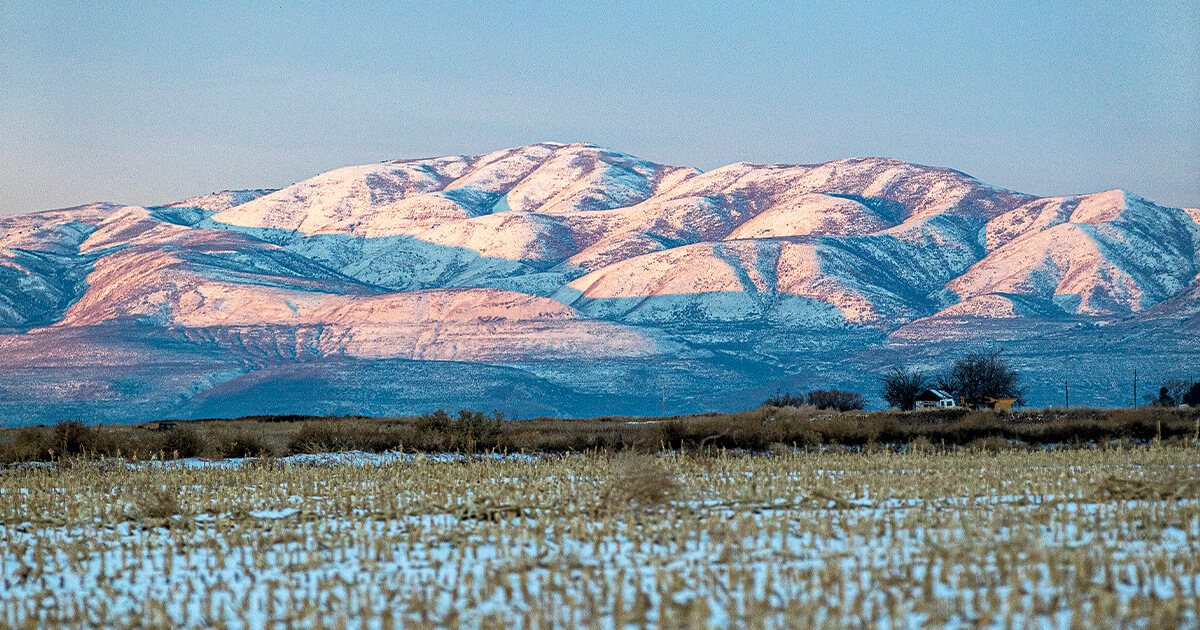
It isn’t the few hours we’d been hoping for, but it is a harvest nonetheless, a special kind for those who care as much for conserving waterfowl and wetlands as for filling a skillet. Overhead, for hours on end, there are ducks for the morrow and for many mornings after that. If the dreams of Dolson and many others are realized, it’s a down payment for generations of duck hunters neither of us will ever meet.
“The hunting we do here today doesn’t exist anywhere else in the world,” says Jessop Boden. The director of development for DU’s Western Region settles into a decoy sled that’s pulling double duty as a coffin blind. All around us are scores of silhouette decoys—simple charcoal-colored duck shapes that throw long shadows of themselves across the skinny water, effectively doubling the decoy spread. We are far into the vast emptiness of the Great Salt Lake, where giant sheets of ice float over mud- flats that measure by the square mile. “I don’t know if the ducks will show,” Boden grins. “But I do know that you’re gonna need a bath after today.”
Hunting the Great Salt Lake via airboat and silhouette decoys is a long tradition, cherished not only for its effectiveness but for its wild environs. Getting here is half the adventure. Crossing the lake, Chad Yamane, DU’s regional director in Utah, keeps a tight grip on the controls as the airboat skims across miles of frozen mud and water. The flats are laced with thousands of duck tracks. A bald eagle pauses its feeding on a teal to watch us warily as we pass. One of the challenges with hunting ducks here, Yamane tells me, is to avoid disturbing ducks on the feed, but dropping lake levels make it difficult to navigate around large flocks.
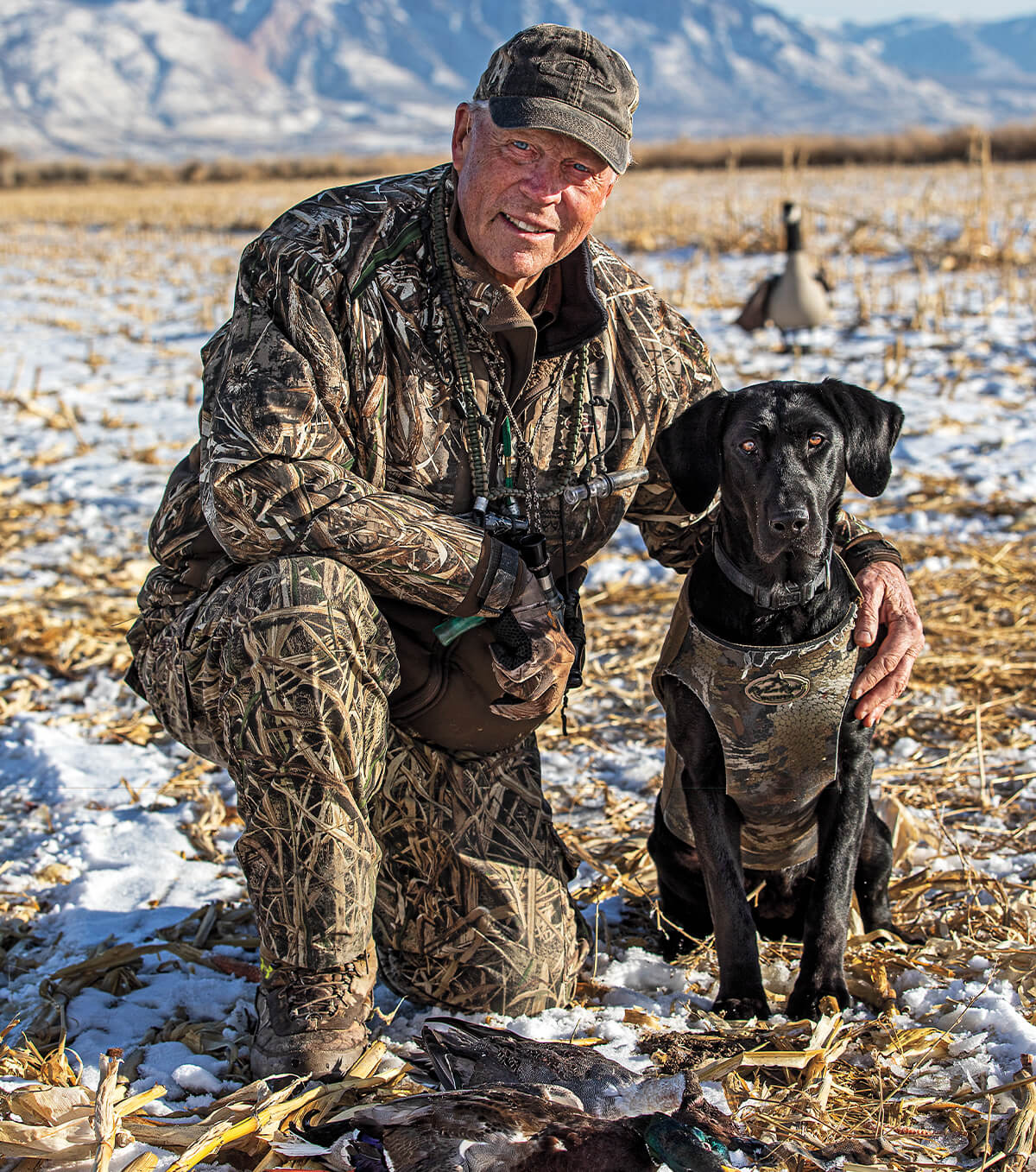
In fact, the critical value of every half-inch of water in the Great Salt Lake is clearly evident here. When a potential plan was announced to dam the Bear River and pipe water to Salt Lake City, officials said it would only lower the lake by eight to 14 inches. But that would be a serious blow to the lake’s already beleaguered ecology, Yamane says. Each year, he has to airboat farther and farther into the lake to find huntable water. Three years earlier, he explains, his favorite hunting areas were a mile away. “It’s all dry ground now,” he laments.
The receding water kicks off a cascade of ills for people and wildlife. Waterfowl, shorebird, and raptor habitat vanishes. Salinity increases, reducing populations of brine shrimp, which feed the multitudes of winged visitors. Water restrictions increase. Less lake-effect snow will impact the nearby ski industry. And even air quality is at risk. The current drought has exposed 800 square miles of lakebed, which contain manmade and natural chemicals such as mercury and arsenic. A strong south wind these days stirs up a visible cloud of toxic dust. Thankfully, Jessop says, “people are beginning to understand the consequences of letting water levels in the Great Salt Lake continue to drop.”
And happily, the Great Salt Lake ecosystem is still fertile enough to produce a feathered miracle. We haven’t been in the sleds 10 minutes when the first birds show. I glimpse their mirrored images in the wet mud and skim water, quick, furtive shapes that race along the surface. Then the ducks emerge from behind the silhouettes. A flock of 15 green-winged teal suddenly turns into 40, and my muscles tense as I brace my knees against the hard plastic sides of the decoy sled and rise from the muck like Arnold Schwarzenegger in that famous scene from Predator.
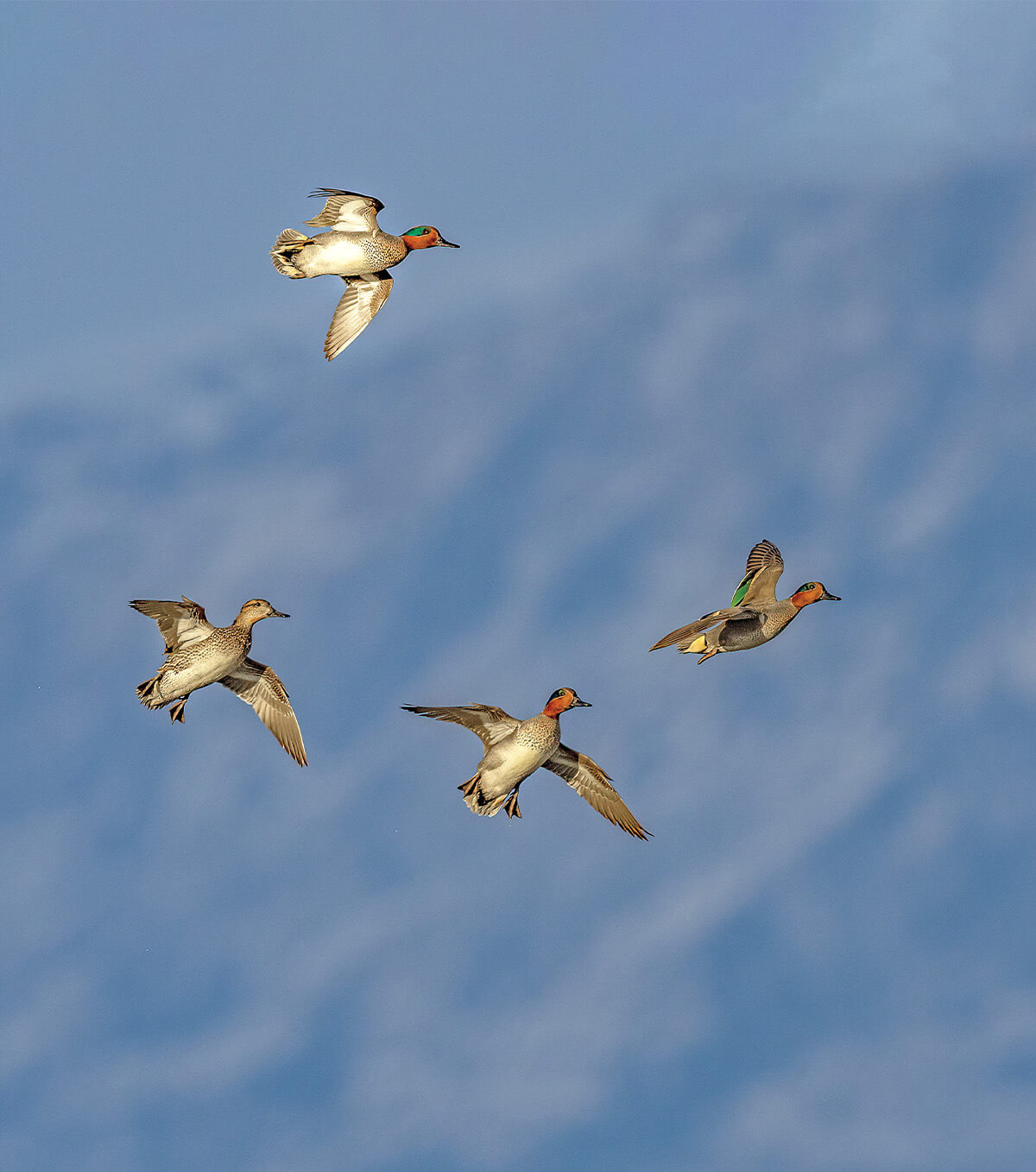
OK. Maybe not all that much like Schwarzenegger. But it sure feels that way.
What happens next is both a testament to the lake’s resilience and the power of committed conservationists to give nature a fighting chance. We knock down a three-man limit of greenwings in about the same amount of time as it takes to bake a potato.
And the flights are only starting. After we pull up the decoys, we stand by the airboat and watch teal stream across the mudflats by the hundreds and hundreds. As the day warms and the ice melts, those numbers will grow into the thousands.
How much longer the Great Salt Lake’s astonishing resiliency will support such wildlife is an open question. What is not an open question is how committed wetlands and waterfowl conservationists—not to mention local residents—will need to be in the long task of shoring up the Great Salt Lake’s irreplaceable ecosystem. Settling into my airboat seat for the ride back, I remember what Jack Ray said on my first day in Utah. “You don’t win every battle,” he contended. “But you lose every single fight that you’re not in.”
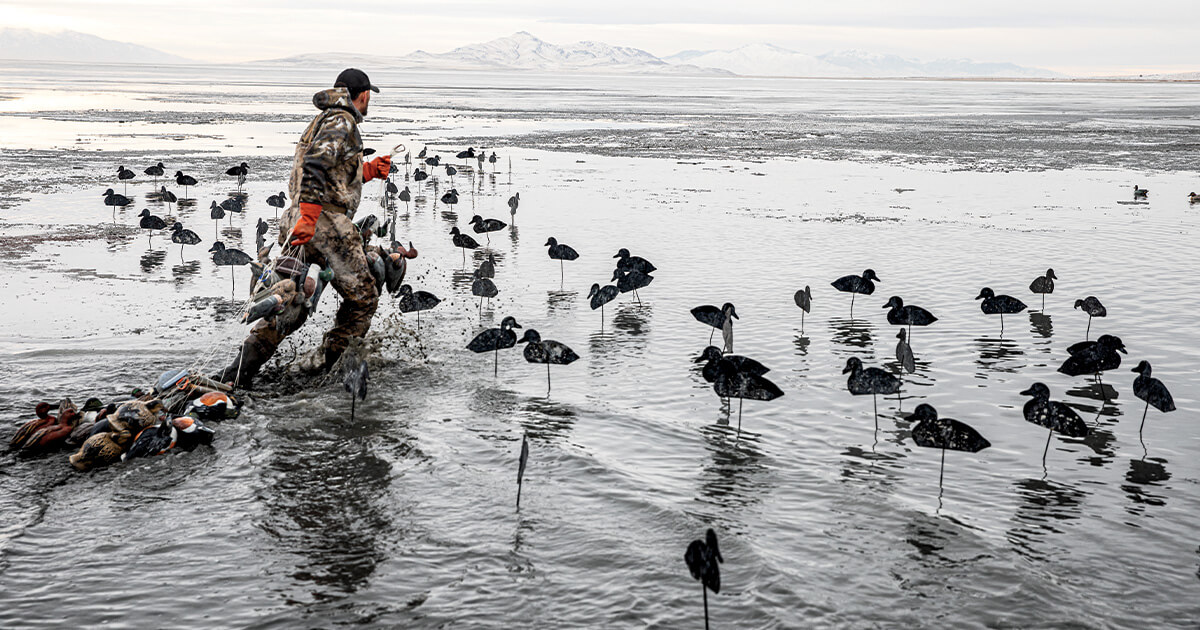
DU Regional Director Chad Yamane
Ducks Unlimited uses cookies to enhance your browsing experience, optimize site functionality, analyze traffic, and deliver personalized advertising through third parties. By continuing to use this site, you agree to our use of cookies. View Privacy Policy